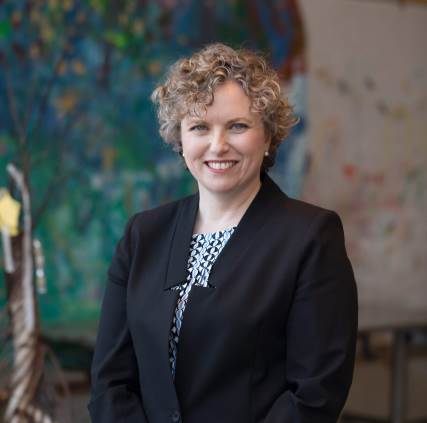By Julia Hanigsberg
I’m not a fan of hyperbole. So, take me at my word when I say that we are going through unprecedented health care transformation in Ontario. What is this transformation all about? What’s the view through the lens of child health? And what should you be paying attention to?
If you are the parent of a child with a chronic condition or serious medical disorder, you likely have binders of records you cart around to hospitals because you don’t have confidence that anyone but you can keep track. Parts of the system don’t connect easily for families and seamless digital access to health records is uncommon. Often people wait too long for services or get “stuck” in hospitals because other parts of the system (e.g. long-term care) aren’t available when they need them.
What is the government doing? It’s creating Ontario Health Teams, which include all the service providers and partners required for optimal health of the people within a particular geography. The mix includes primary care (physicians, nurse practitioners), home nursing and other home supports, hospitals, school health, children’s treatment centres, transportation, emergency responders and public health.
The other element of the transformation is something called Ontario Health. It brings together a single board of directors along with a number of health funding, coordinating, standards and quality-setting organizations (e.g. local health integration networks, Cancer Care Ontario, Health Quality Ontario and others).
How is the government doing this? The short answer is: fast! The government indicated that it might approve three to five health teams in the first round, within only a few months, and then ended up receiving well in excess of 150 applications.
It’s important to remember that kids aren’t little adults. The way we care for children needs to be designed around their wellness needs. Their health exists within the ecosystem of their family, school and community. Most children don’t receive their health care in specialty children’s hospitals. Their care happens at the family doctor, at the local community hospital, in school, through public health. For 85 per cent of children who are mostly well, their health services experience will be routine and infrequent.
The investment in children’s health will reap a long-term return on population health. For example, treating chronic conditions early can prevent a greater need down the road. An even better example is prevention – keeping children from getting sick in the first place.
However, very ill children are moving into adulthood with ensuing health and social service needs. Making sure our “new” health system works for those children today, as youth, and into adulthood is something that must happen. But plans for children can be eclipsed because the chronic conditions of the aging population are taking up most of the air time. Seniors vote and kids don’t.
Across Ontario, family doctors are still often solo practitioners, leaving them and their patients vulnerable and frustrated. Highly integrated health systems include well-organized and integrated primary care. Pay attention to how and whether Ontario Health Teams are including and engaging primary care providers.
We should care about the cost of the health system because, as taxpayers, we pay for it. We should care about how appropriately funded it is because we use it for ourselves and our family. We know that the government will want to drive cost out of the health system, but if our system gets cheaper before it gets better – organized, integrated and more streamlined – then we should be worried.
And finally, keep in mind that sign you see when you drive in your neighbourhood: “Slow down! Watch for children”. If the system we are creating doesn’t work well for the kids, it probably isn’t going to work for any of us in the long run.
Slow down. Watch for children. The future of health care is depending on us.
Julia Hanigsberg is president and CEO at Holland Bloorview Kids Rehabilitation Hospital.




